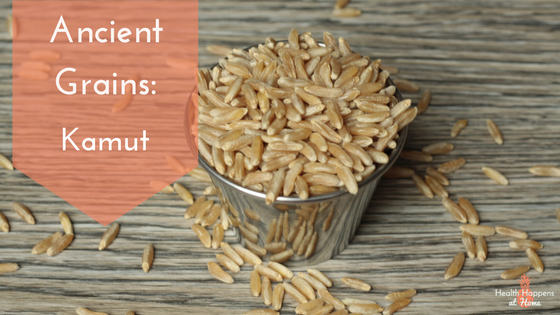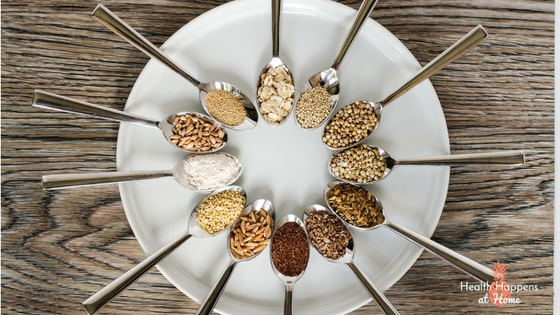
Affiliate links may be included in this post. Learn more here. Thanks for your support!
Facts on Kamut:
- Kamut is technically a brand name for khorasan wheat.
- May be better tolerated by some with wheat sensitivity but does contain gluten (so not safe for Celiac disease)
- Has a rich fatty acid profile and more protein than common wheat
- Is high in selenium (immune health), manganese (bone and brain health), magnesium (blood pressure control, bone health), phosphorus (important for kidney function) and zinc (aids digestion, hormone balance and helps prevent common cold)
- Is rich in carotinoids (antioxidants)
- Is always grown organically and is nonhybridized
- The fiber content in whole grains aids in cholesterol management and helps regulate digestion.
- Use Kamut as a substitute to rice or quinoa in a meal or as an oat alternative.
To prepare Kamut:
- Soak kamut grains overnight.
- Combine 1 part Kamut to 3 parts water or broth.
- Bring to a boil.
- Cover and reduce heat to a simmer for about 30 - 40 minutes or until grains are tender. Cook longer (about 1 hour) for unsoaked grains.
Sources/Resources for more on Kamut:
http://www.kamut.com/
https://draxe.com/kamut/
https://www.drweil.com/diet-nutrition/cooking-cookware/cooking-with-grains-kamut/
Don't forget health happens at home,
Erin Marie
This content was originally posted in the monthly newsletter. Be among the first to get new content and other bonuses by subscribing below.
Summing up the ancient grain sorghum.
Get the basics on buckwheat!
Orange Cranberry Ancient Grain Granola Recipe. #thereciperedux
Links on yoga, personality types, gut microbiome, store bought snacks, and ancient grains to inspire healthier living.
Facts on Freekeh are here and the series on ancient grains continues.
Sick of sweets for breakfast? Try this savory Mushroom Goat Cheese Buckwheat. #thereciperedux
Get some facts on the ancient grain bulgur. Plus my favorite recipe using bulgur!
Get the scoop on the ancient grain Teff.
Learn about the ancient grain Kamut.




















Ancient grain summary of posts including recipes links!